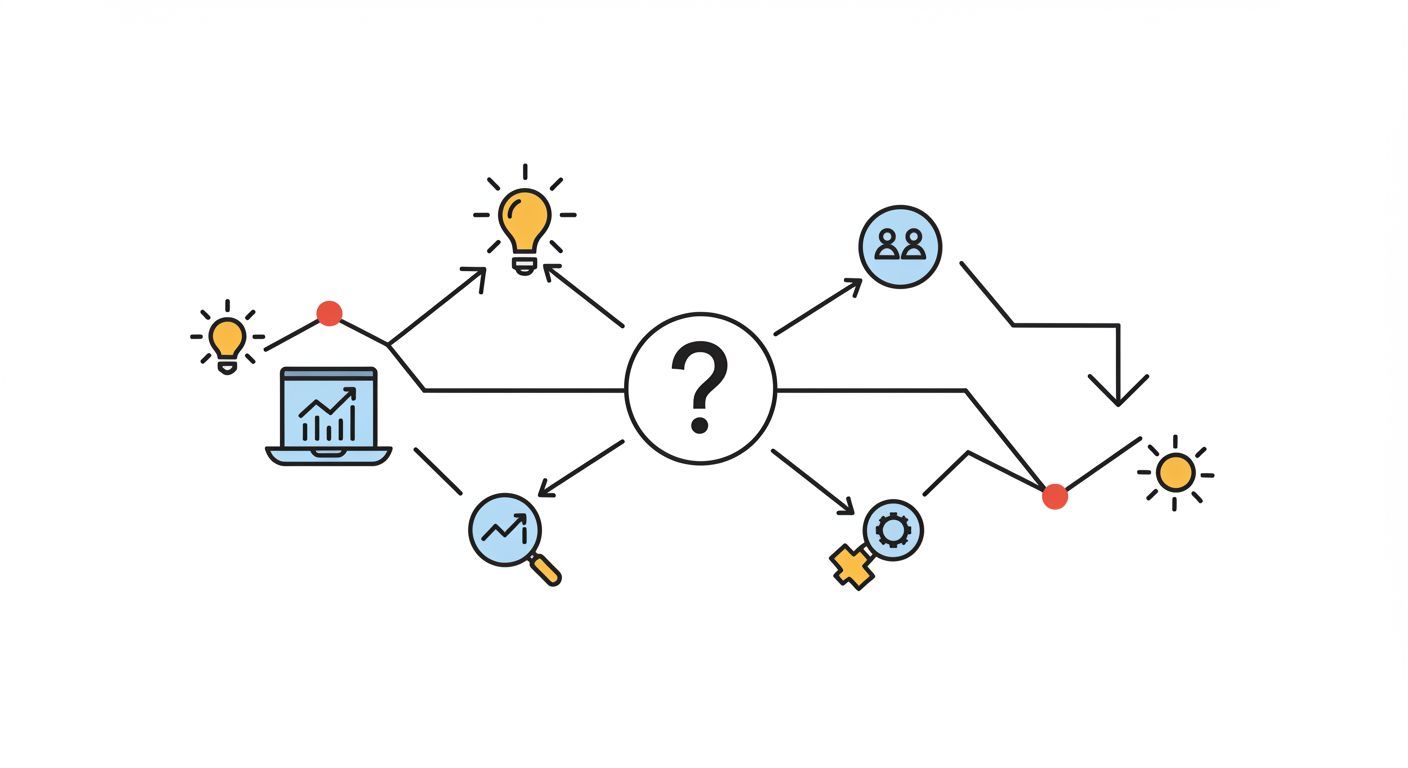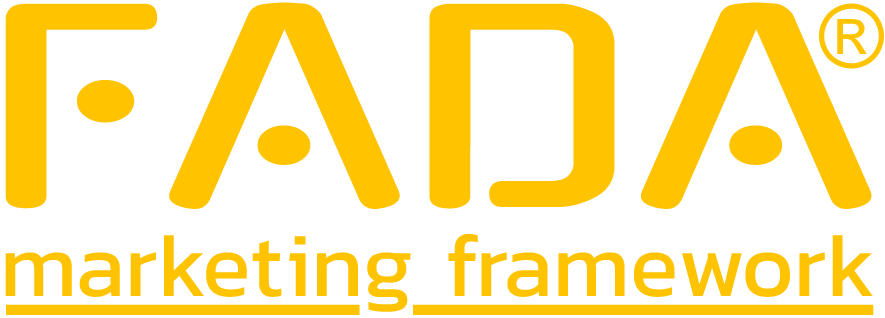From AIDA to FADA: The Evolution of Marketing Frameworks for the Digital Age
For over a century, marketers have relied on a trusted blueprint: the AIDA model. Representing Attention, Interest, Desire, and Action, AIDA was a revolutionary concept that perfectly captured the linear customer journey in the age of print and broadcast media. It was the undisputed champion of marketing strategy. But the world has changed.

The modern customer journey is no longer a straight line; it's a complex web of interactions across search engines, social media platforms, and review sites. This new digital landscape revealed a critical flaw in the classic model: You can't capture a customer's attention if you don't have a solid place for that attention to land. This challenge paved the way for an evolution, a new framework designed for the modern era: FADA®.
The Missing First Step
The FADA® marketing framework was developed after consulting with hundreds of small business owners who felt they were sold complex solutions while missing the fundamental building blocks for success. FADA is an acronym for Foundation, Awareness, Differentiation, and Action. It provides a professional-grade, sequential approach that brings structure and purpose to any marketing strategy.
Here’s how FADA builds upon and modernizes the classic AIDA model.
1. Foundation: The Digital Home Base
The most significant evolution from AIDA is FADA's starting point:
Foundation. AIDA begins with capturing "Attention," but FADA recognizes that in the digital age, this is putting the cart before the horse. Before you spend a single dollar on advertising, your digital foundation must be in order. Without a solid foundation, your marketing investment is unlikely to achieve a positive return on investment.
The Foundation defines who you are and what you do, and it resides in three primary places:
- Your Website: This is the central hub of your digital presence. A good website doesn't need to be "fancy"; it needs to be clear, professional, and focused on how you solve your customers' problems. Its quality is not a matter of opinion but is measurable by its conversion rate.
- Social Media Profiles: Your social channels are your brand's voice and must be professional and consistent. LinkedIn is often preferred for B2B businesses, while platforms like Facebook, Instagram, TikTok, or YouTube are effective for B2C companies.
- Business Citations (Listings): Your presence on directories like Google Business Profile, Yelp, and Apple Maps must be accurate and consistent to build trust and support local SEO.
2. Awareness: The Modern "Attention"
Once a solid Foundation is in place, you can confidently invest in
Awareness. This component is the modern successor to AIDA's "Attention". Its function is to make potential customers aware of your business, the problems you solve, and the benefits you provide.
In the digital world, Awareness leverages repetition. The more often a customer sees your logo and message, the more familiar and trustworthy your brand becomes. This can be achieved through:
- Content Marketing & SEO
- Social Media Marketing
- Paid Advertising
- Creative "Guerilla" Marketing
An effective Awareness campaign drives curious users back to a strong Foundation, ensuring your investment pays off.
3. Differentiation: Earning "Interest" and "Desire"
In a competitive market, simply getting attention isn't enough. This is where
Differentiation comes in. Failure to achieve it can be catastrophic; you risk spending your time and money educating a customer, only to have them buy from a competitor who stands out more.
Differentiation answers the critical question: "Why should I choose you over everyone else?". It’s about creating a unique value proposition that resonates with your target audience. Common claims like "family-owned business," "great customer service," or "free quotes" are not true differentiators because they are widely expected and add little unique value.
Successful differentiation allows you to build trust, command higher prices, and win more business than competitors.
4. Action: The Ultimate Goal
The final component, Action, is the ultimate goal shared by both frameworks. Action is a measurable event created by a potential new customer. In digital marketing, this is often called a "conversion," as it represents the conversion of a website visitor into a sales lead or sale.
Actions can include a wide range of engagements:
- A phone call or website lead
- An online purchase
- Customer referrals
- Walk-in traffic
- Social media comments and shares
In the FADA framework, Actions don't just happen. They are the direct result of the Foundation, Awareness, and Differentiation components working together in perfect harmony.
The Fire Triangle of Marketing
The relationship between the components can be compared to the fire triangle, where you need fuel, heat, and oxygen for a fire to ignite.
- Foundation is the Fuel.
- Awareness is the Oxygen.
- Differentiation is the Heat or spark.
Only when all three elements combine does Action—the fire that powers business growth—ignite. A business complaining about a lack of leads is almost always deficient in one of these three areas.
By starting with a solid Foundation and creating a clear path through Awareness and Differentiation, the FADA framework provides the simple, powerful, and organized approach needed to achieve consistent business growth in the digital age.








